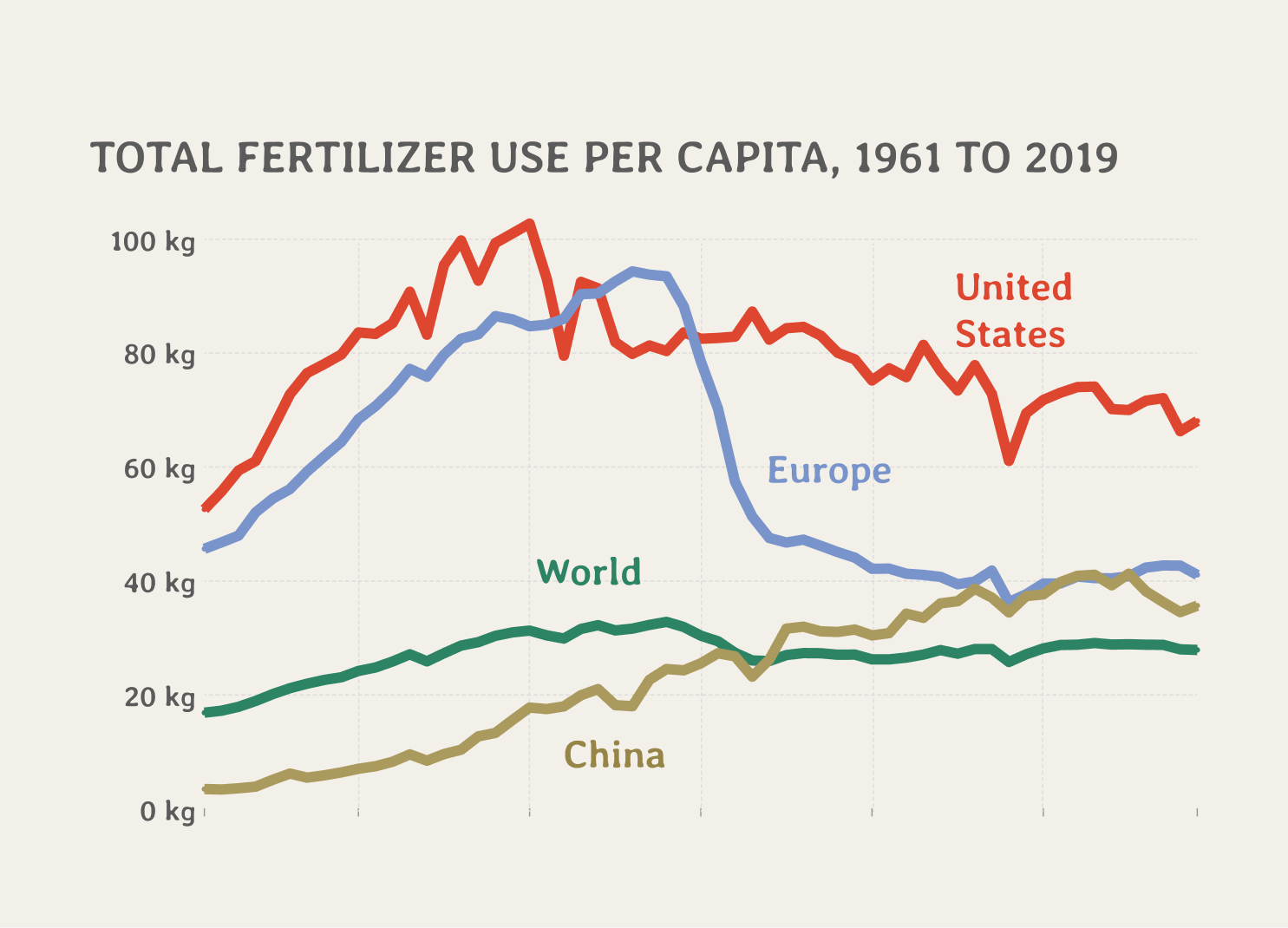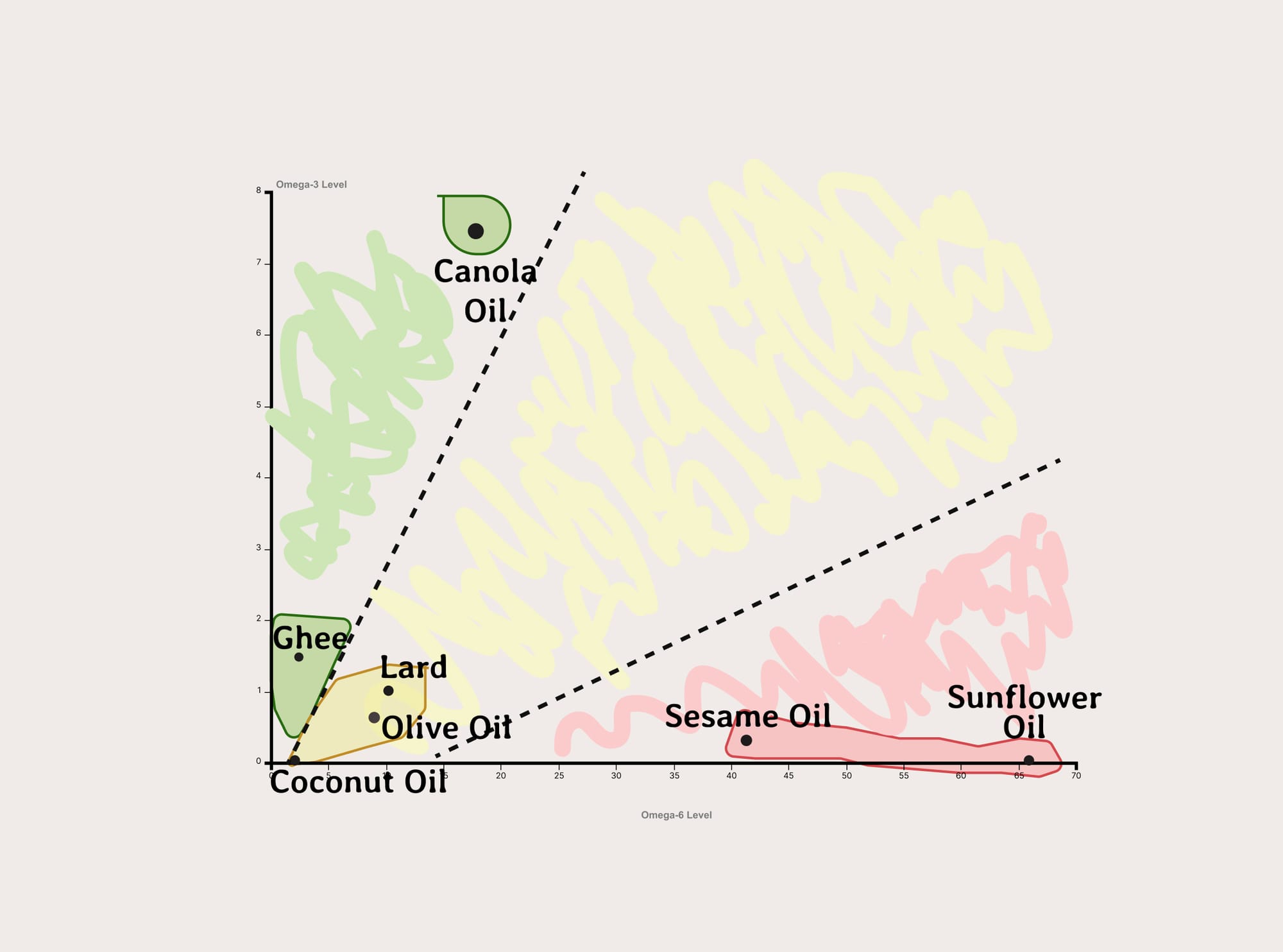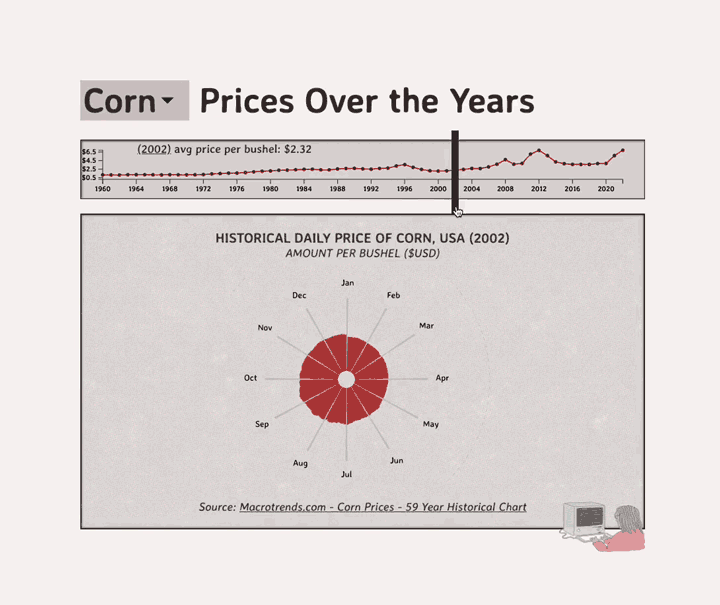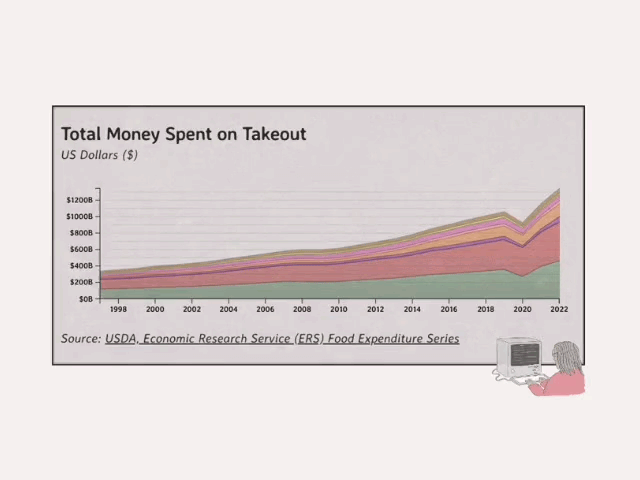What are Plant Hardiness Zone Maps?
Apparently, plant zones borders have moving upward over the past few decades

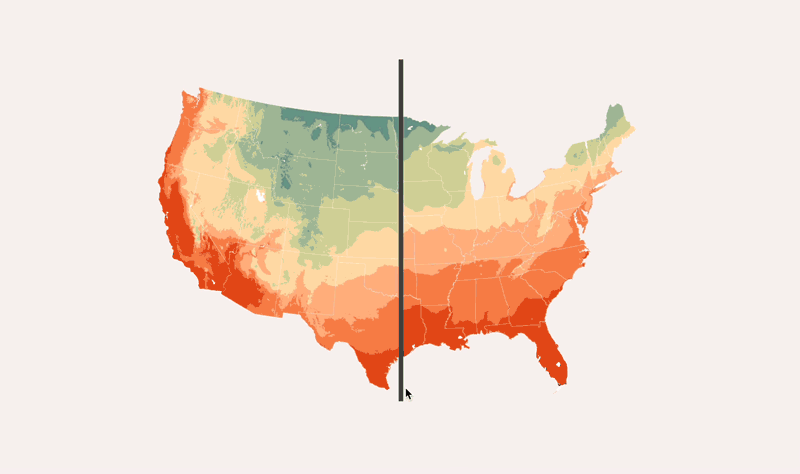
Hello y'all,
First, if you're reading this in email, I really recommend reading this in the browser, otherwise there'll be weird bugs. Click the 'View in browser' at the top of this email. I'll wait.
Second, I realize I don't talk to my subscribers all that often, but I want to say I'm updating the blog, namely moving off of substack and moving to ghost (full blog here). I want to make my posts and tutorials more interactive, so here we are.
Lastly, thanks for subscribing! I appreciate y'all sticking with me as I figure out what this is. To unsubscribe, no worries, just click the link at the bottom of this email, and go fuck yourself (jk).
Plant hardiness zones are categories created by the USDA to help people understand which plants are likely to thrive in certain environments. It's a system calculated from the coldest temperature of the year at each location, averaged over a 30-year period. Hardiness - in this context - refers to the likelihood of a plant dying from the cold.
I'm writing about this because, apparently, plant zones borders have moving upward over the past few decades. The NYTimes has a more comprehensive piece on this than I do, so I would recommend reading their page if you want to get full story; they ask a few growers in the piece how their gardening habits have changed, and it's nice to hear from the practitioners themselves about the problem.
Truthfully, I just wanted to code this phenomenon, mainly because I'm still testing out different forms on content. I wonder...is this a useful map?
As temperatures warm across the US, plant hardiness zones have shifted upwards
Plant Zones, based on the coldest temperature of the year at each location, averaged over a 30-year period ending in the stated year (drag slider)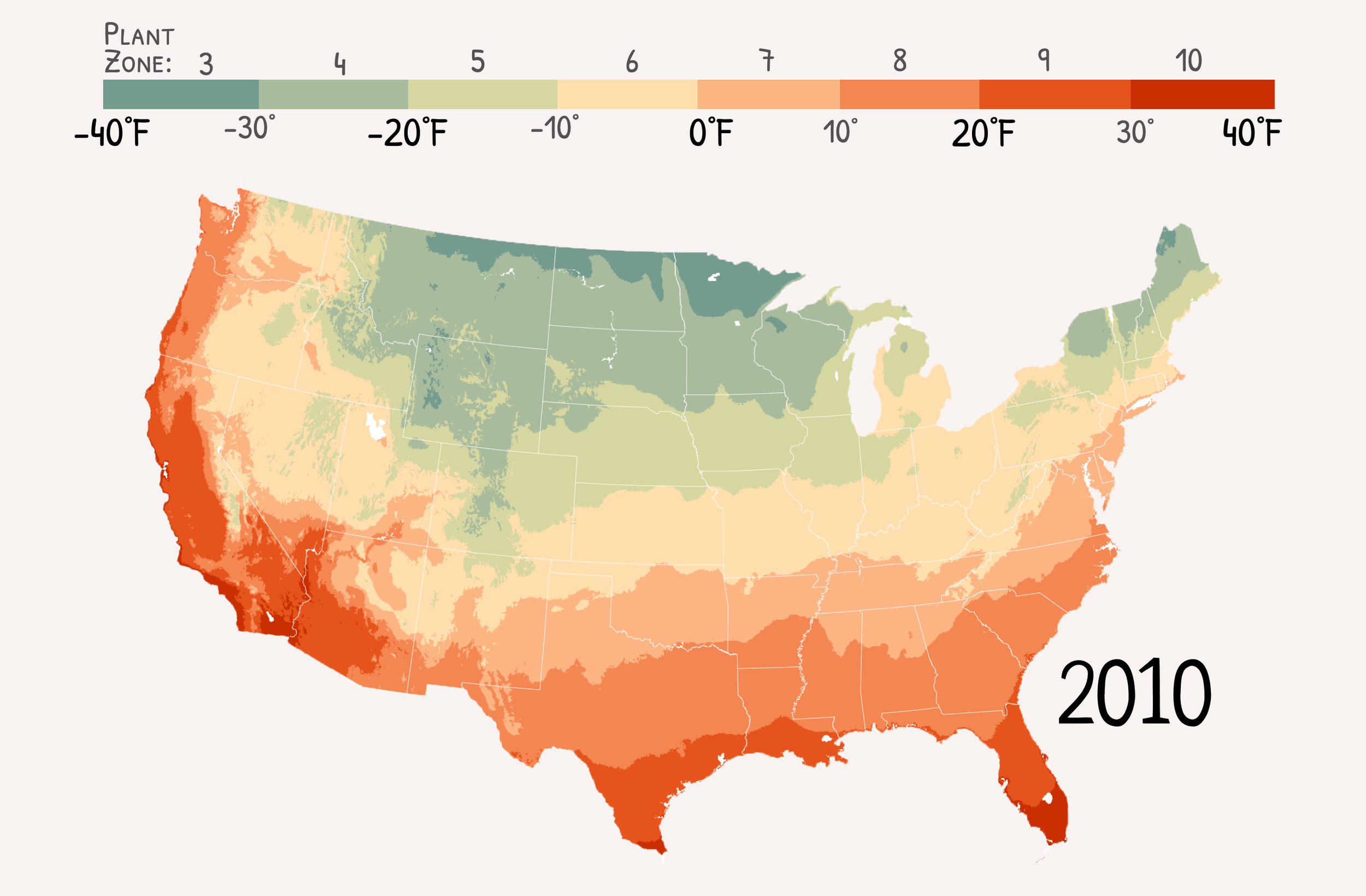
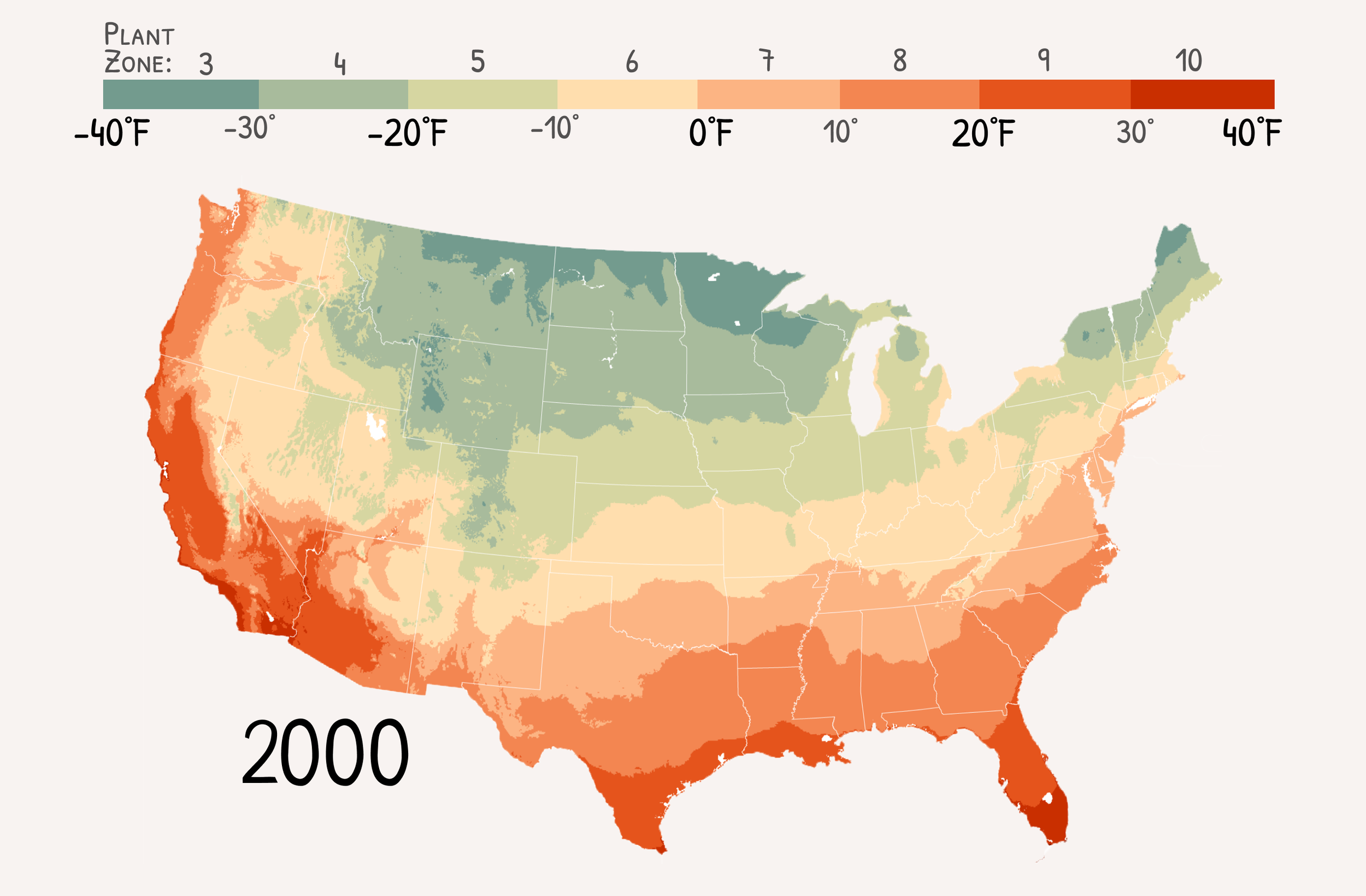
Anyway, there are actionable things to do to combat this, assuming a plant of yours will soon be zoned out from its former habitat:
- Mulch heavily, to protect a plant's roots and crown. A thick layer of mulch can often provide half to a full zone extra of hardiness.
- Plant in a microclimate, or an area of your garden that is different from the surrounding area. Sometimes it's raised soil that allows for better soil. Sometimes it's a particular sunny spot in the garden.
- Go on Google. Frankly I don't garden, and this blog is more so a curation of useful tips. I'm sure the experts out there have documented the process. Apparently this is called 'zone pushing', which is cool terminology.
